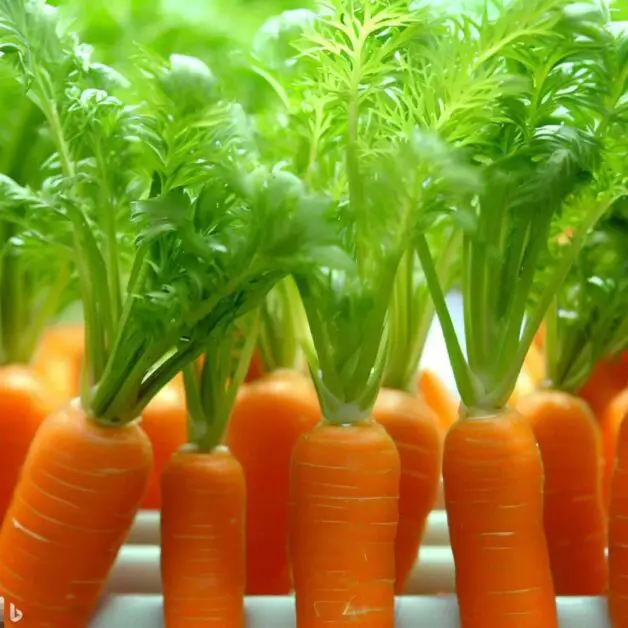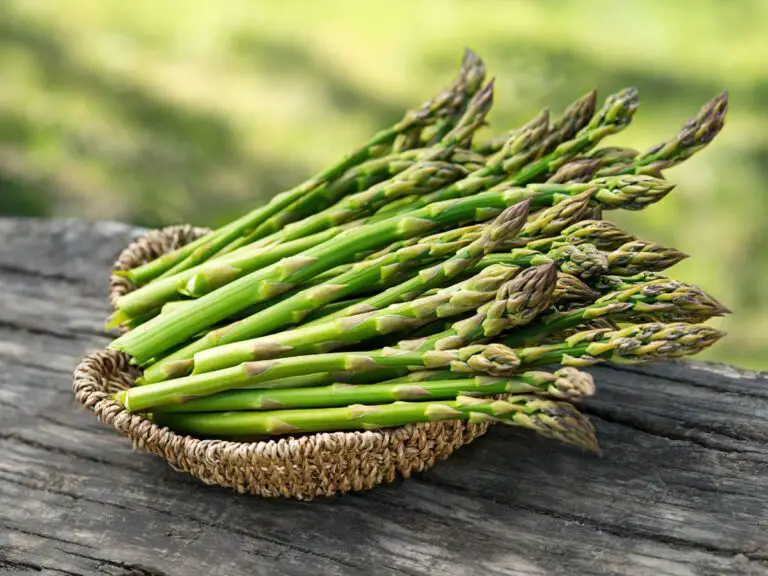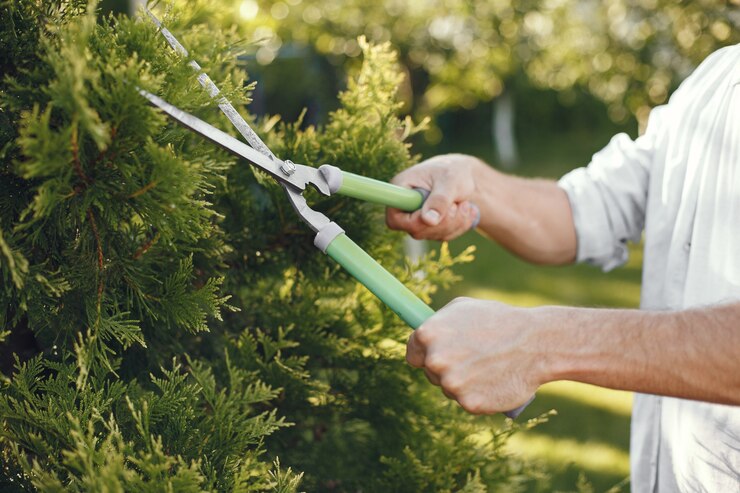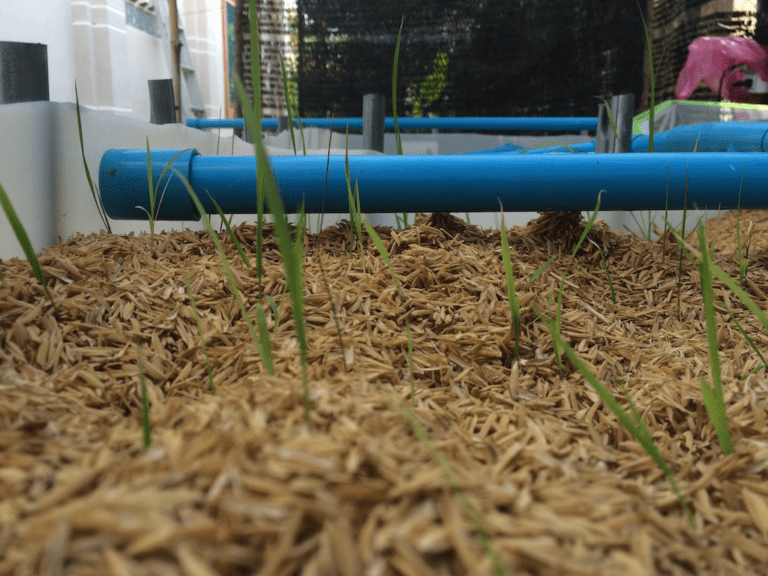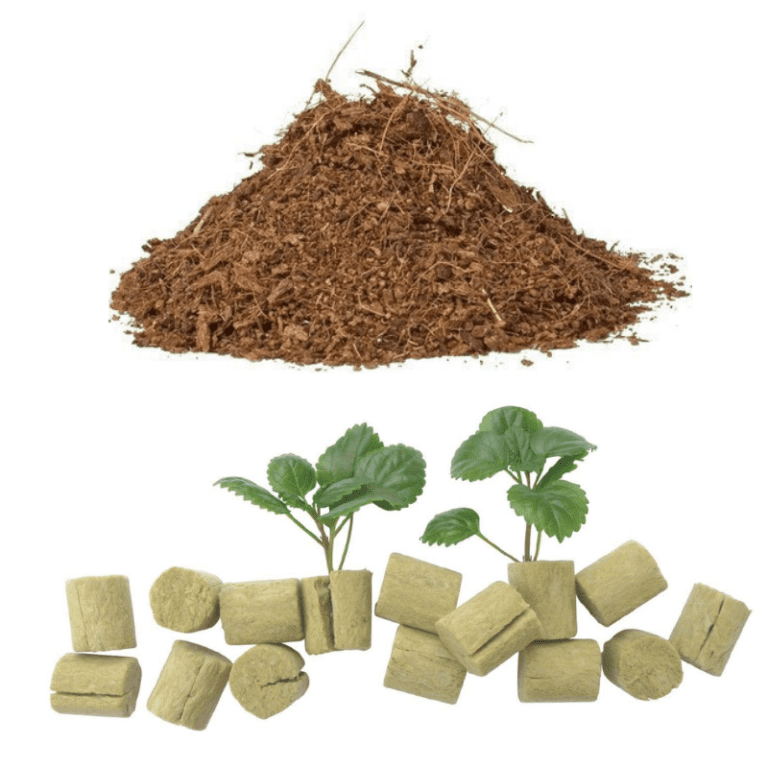How to Grow Crunchy and Sweet Hydroponic Carrots
Did you know that hydroponic gardening can produce carrots sweeter and crunchier than those from traditional soil gardens? It’s true! Welcome to the world of hydroponic carrot cultivation, where flavor and texture reach new heights right in your backyard. In this guide, we’ll dive into the fascinating realm of growing these delectable root vegetables hydroponically.
From setup tips to maintenance tricks, we’ve got you covered. Whether you’re a seasoned gardener or a curious beginner, join us on this journey to discover the secrets of cultivating carrots that burst with sweetness and crunch. Get ready to elevate your gardening game and savor the rewards of homegrown goodness!
Remember, the key to successful hydroponic carrot growing lies in the details. So, let’s dig in and unlock the secrets to cultivating nature’s candy!
Table of Contents
Understanding the Benefits of Hydroponic Carrots
Hydroponic farming has gained significant popularity in recent years, and for good reason. When it comes to carrots, this innovative cultivation technique offers a range of benefits that can enhance both the quality and quantity of your harvest.

- Accelerated Growth Rate: Hydroponic systems deliver a nutrient-rich solution directly to the plant’s roots, allowing carrots to access essential nutrients more efficiently than soil-based methods. This results in faster growth and development, meaning you can enjoy fresh, crispy carrots in a shorter time frame.
- Optimal Root Development: Hydroponic setups provide ideal conditions for root growth, yielding straighter and more uniform carrots that are visually appealing and easier to handle in the kitchen.
- Enhanced Nutritional Value: Carefully controlled nutrient solutions ensure that hydroponically grown carrots are more nutrient-dense than conventionally grown ones. With higher levels of essential vitamins like A and beta-carotene, these carrots contribute to a healthier diet for you and your family.
- Improved Water Efficiency: Hydroponic systems minimize water waste by recirculating and reusing nutrient solutions, reducing water consumption compared to traditional soil-based cultivation. This makes hydroponic farming a more environmentally sustainable option, especially in water-scarce regions or areas prone to drought.
In summary, hydroponic carrots offer accelerated growth, enhanced nutrition, and improved water efficiency, making them a valuable addition to any garden or kitchen.Stay tuned to learn about selecting the right hydroponic system for carrot cultivation and maximizing the flavor and variety of your crop.
Selecting the Right Hydroponic System for Carrot Cultivation
When it comes to cultivating carrots in a hydroponic system, selecting the right setup is crucial for successful growth and optimum yields. There are several types of hydroponic systems available, each with its own unique advantages and considerations. The choice of system will depend on factors such as available space, budget, desired yield, and personal preference.
nutrient film technique

One popular option for growing carrots hydroponically is the nutrient film technique (NFT) system. This system involves a continuous flow of nutrient-rich solution over the roots of the plants, providing them with the necessary water and nutrients. NFT systems are known for their efficiency in water and nutrient usage, making them a sustainable choice for carrot cultivation.
deep water culture
Another option to consider is the deep water culture (DWC) system. In this system, carrot plants are suspended in a solution of nutrient-rich water, allowing their roots to directly access the nutrients. DWC systems are relatively easy to set up and maintain, making them suitable for beginners. The deep water culture system also allows for proper aeration of the roots, promoting healthy growth.
vertical tower system
Alternatively, you may opt for the vertical tower system, which is particularly beneficial for those with limited space. This system involves vertically stacked layers of growing containers, allowing for multiple tiers of carrot plants. Vertical tower systems maximize space utilization and are ideal for urban or indoor gardening.
Before selecting a hydroponic system for carrot cultivation, it is essential to thoroughly research each option and consider your specific requirements. Factors such as space availability, desired yield, and budget should be carefully considered. Ultimately, choosing the right hydroponic system will be a key determinant of the success of your carrot cultivation endeavor.
After utilizing the Hydrofarm Deep Water Culture Bucket System for my hydroponic gardening needs, I’m impressed with its efficiency and simplicity. Setting up the system was straightforward, and it provided ample oxygen to my plant roots, resulting in robust growth. However, I did find that regular maintenance was essential to ensure optimal nutrient levels and pH balance. Overall, the system’s versatility and scalability make it a valuable addition to any hydroponic setup, offering the potential for high yields with proper care and attention.
- Simple Setup: The system likely features a straightforward design, making it easy to assemble and use, even for beginners.
- Optimal Oxygenation: Deep water culture provides ample oxygen to plant roots, fostering healthy growth and nutrient absorption.
- Versatility: It can accommodate various types of plants, including leafy greens, herbs, and flowering plants, offering flexibility in cultivation.
- Scalability: Growers can expand their hydroponic operation by adding more buckets to the system, allowing for increased plant capacity.
- High Yield Potential: With proper maintenance and nutrient management, deep water culture systems have the potential to yield abundant harvests.
- Maintenance Requirements: Regular monitoring of nutrient levels, pH balance, and water quality is necessary to prevent issues such as nutrient deficiencies or algae growth.
- Space Intensive: Setting up a deep water culture system requires sufficient space, both horizontally for the buckets and vertically for the plant canopy.
- Initial Investment: While cost-effective in the long run, there may be an initial investment in equipment such as air pumps, air stones, and nutrient solutions.
- Risk of System Failure: Malfunctions such as pump failure or power outages can quickly affect plant health and lead to crop loss if not addressed promptly.
- Learning Curve: Beginners may encounter a learning curve when initially setting up and operating a deep water culture system, requiring research and experimentation to achieve optimal results.
Choosing the Ideal Hydroponic Carrot Varieties for Optimum Flavor
When it comes to growing hydroponic carrots, choosing the right variety is crucial for achieving optimum flavor. There are several factors to consider when selecting the ideal carrot variety for your hydroponic setup.
| Carrot Variety | Characteristics | Advantages | Disadvantages |
|---|---|---|---|
| Imperator | Long, slender, tapered | – High yield potential. – Sweet flavor. – Ideal for fresh consumption. | – Longer growth period. – Requires deep containers for root development. |
| Nantes | Cylindrical, smooth | – Sweet and tender. – Suitable for baby carrots. – Faster growth compared to Imperator. | – Shorter length. – May not store as well as Imperator. |
| Danvers | Medium-sized, conical | – Good yield. – Adaptable to various growing conditions. – Sweet flavor. | – Not as uniform in shape as Imperator or Nantes. – Some tapering at the tip. |
| Chantenay | Short, thick, stump-rooted | – Sweet and versatile. – Suitable for shallow containers. – Good for juicing. | – Shorter length. – May not be as visually appealing as other varieties. |
By carefully selecting the ideal carrot variety for your hydroponic system, you can ensure that you are growing carrots with optimum flavor, texture, and nutritional value. Taking into account factors such as size, shape, color, and adaptability to hydroponic conditions will help you make an informed choice and get the most out of your hydroponic carrot cultivation experience.
Preparing the Hydroponic Growing Medium for Carrots
The hydroponic growing medium plays a crucial role in the successful cultivation of carrots. Unlike traditional soil-based gardening, hydroponics relies on a soilless medium that provides essential support, moisture, and nutrient delivery to the plants’ roots. Choosing the right medium ensures optimal growth, nutrient uptake, and overall health of your hydroponic carrots.

- Coco Coir and Perlite Mix: This blend offers a sustainable and renewable option for hydroponic carrot cultivation. Coco coir, derived from coconut husks, and perlite, a lightweight volcanic glass, create a well-aerated and moisture-retentive environment ideal for healthy root development.
- Rockwool: Made from melted basalt rock or slag, rockwool provides excellent water retention, oxygenation, and root support for carrots. Its fibrous structure ensures even distribution of moisture and nutrients, promoting robust growth. However, maintaining proper pH levels is essential when using rockwool to ensure optimal nutrient availability for the plants.
Overall, the choice of hydroponic growing medium for carrots depends on various factors such as availability, cost, ease of use, and personal preferences. Whether you opt for coco coir and perlite or rockwool, make sure to thoroughly rinse the medium before planting to remove any impurities. Your goal is to provide your hydroponic carrots with a clean and stable growing environment that promotes healthy, vigorous growth.
Having used Mother Earth Coco Perlite Mix in my gardening endeavors, I found it to be a reliable and efficient growing medium. The mix provided excellent drainage and aeration, ensuring optimal conditions for plant root development. However, I did notice that regular fertilization was necessary to supplement the low nutrient retention of the mix. Overall, Mother Earth Coco Perlite Mix proved to be a valuable addition to my gardening routine, offering a lightweight and versatile option for cultivating healthy and thriving plants.
✅ Enhanced Aeration: The perlite component creates air pockets in the mix, improving oxygen availability to the roots and promoting healthier plant growth.
✅ Lightweight: Coco coir and perlite mixes are typically lightweight, making them easy to handle and transport, particularly for container gardening.
✅ pH Stability: Coco coir has a naturally balanced pH level, providing a stable environment for plant roots to thrive.
✅ Reusable: Depending on the quality of the mix, it may be reusable for multiple growing cycles, offering long-term value for gardeners.
❌ Potential Dust: Perlite can produce dust particles when handled, which may pose a risk of irritation to the skin and respiratory system.
❌ Not Suitable for All Plants: Some plant species may prefer a denser growing medium with higher nutrient retention, making coco coir and perlite mixes less suitable for certain plants.
❌ Initial Investment: While cost-effective in the long run, there may be an initial investment required to purchase the mix and additional nutrients for plant growth.
❌ Quality Variability: The quality of coco coir and perlite mixes can vary depending on the manufacturer, with some mixes containing more perlite or coir than others, impacting their performance.
Germinating Carrot Seeds in a Hydroponic Setup
Germinating carrot seeds in a hydroponic setup is a crucial step in successfully cultivating vibrant and healthy carrot plants. When it comes to germination, the quality of the seeds is of utmost importance. Opt for high-quality seeds from a reputable supplier to ensure a higher germination rate and ultimately, a successful harvest.
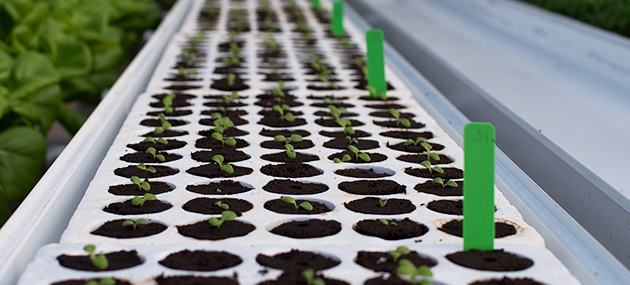
Transplanting Seedlings into the Hydroponic System
After carefully nurturing your carrot seedlings to the appropriate stage, it’s time to transplant them into your hydroponic system for further growth. Transplanting seedlings into a hydroponic system requires precision and care to ensure their successful adaptation to the new environment.
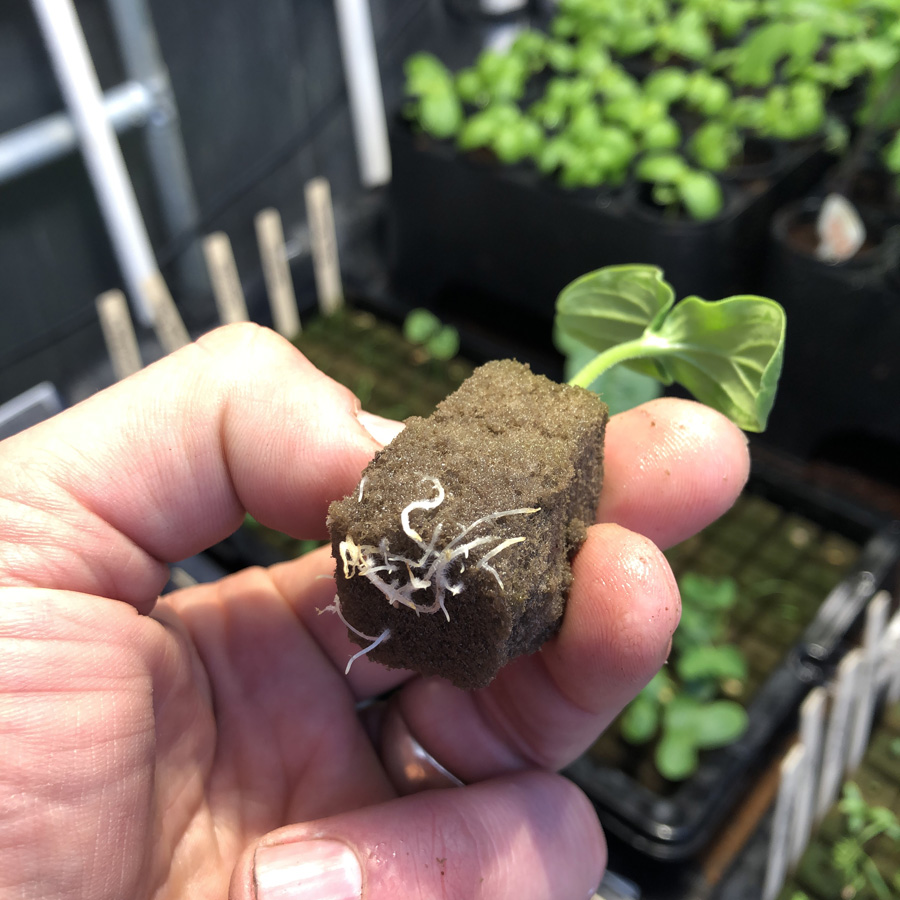
- System Preparation:
- Ensure your hydroponic system is ready for transplanting. Check that the nutrient solution is well-balanced and the pH levels are within the optimal range for carrot growth.
- Provide adequate lighting (usually full-spectrum LED lights) and maintain suitable temperature and humidity levels in your growing environment.
- Seedling Handling:
- Gently remove the seedlings from their nursery containers. Be cautious not to damage the delicate roots.
- Handle the seedlings by their leaves rather than the stems or roots. This minimizes stress on the plants.
- Transplanting Process:
- Place the seedlings into the pre-prepared holes or baskets in your hydroponic system. Ensure that the roots are fully covered by the growing medium (such as rock wool cubes or net pots filled with clay pellets).
- Avoid overcrowding by spacing the seedlings appropriately. Each seedling should have enough space for healthy growth and efficient nutrient absorption.
Remember, the success of transplanting seedlings into the hydroponic system relies on providing them with an optimal growth environment. By paying attention to the necessary preparations and handling the seedlings with care, you can ensure their smooth transition and set them on the path to vibrant growth and robust carrot production.
Providing Adequate Lighting for Healthy Carrot Growth

To ensure healthy carrot growth in a hydroponic system, providing adequate lighting is crucial. Carrots are known to be a high-light crop, and they require a minimum of 14-16 hours of light per day for optimal growth. When it comes to selecting the right lighting for your hydroponic carrot setup, LED grow lights are highly recommended.
- Advantages of LED Grow Lights: LED lights emit a specific spectrum of light ideal for plant growth, enhancing photosynthesis and promoting vigorous growth. They are also energy-efficient, saving on electricity costs, and produce less heat, reducing the risk of overheating plants.
- Positioning LED Grow Lights: Place lights approximately 12-18 inches above carrot plants for optimal coverage. Regularly monitor and adjust distance to prevent light burn or insufficient light penetration.
By providing the right amount and quality of light, you can ensure healthy carrot growth and a bountiful harvest in your hydroponic system.
Balancing Nutrient Solutions for Optimal Carrot Development
To ensure optimal development of your hydroponic carrots, it is crucial to balance the nutrient solutions properly. Nutrient balance is essential for providing the right amounts of essential elements that carrots need to grow and thrive.
Remember, the proper nutrient balance is vital for achieving maximum yields and high-quality hydroponic carrots. In the next section, we will discuss how to monitor and maintain proper pH levels in your hydroponic carrot system. Stay tuned for more valuable insights to help you become a successful hydroponic carrot grower.
Monitoring and Maintaining Proper pH Levels in Hydroponic Carrot Systems
Maintaining optimal pH levels is crucial for the success of hydroponic carrot systems. Carrots thrive in slightly acidic conditions, with a pH range of 5.5 to 6.5 being ideal. Deviations from this range can negatively impact nutrient absorption, root growth, and overall plant health.
- Regular Testing:
- Use a pH meter or a testing kit specifically designed for hydroponics.
- Test the nutrient solution at least once a week to monitor pH levels.
- Increase the frequency of testing during significant changes (e.g., adjusting nutrients, altering environmental conditions).
- Corrective Action:
- If pH levels deviate from the target range (usually around 5.5 to 6.5 for carrots), take prompt action.
- Use pH up (alkaline) or pH down (acidic) solutions available in hydroponic supply stores.
- Gradual Adjustments:
- Add pH-adjusting solutions gradually to avoid drastic changes.
- Mix the solution thoroughly and allow time for stabilization before retesting.
- Consistent, incremental modifications help prevent stress to the plants.
Remember that maintaining a stable and optimal pH level contributes to healthy plant growth and nutrient absorption. Happy gardening! 🌱🥕 .
Implementing Proper Watering Techniques for Healthy Carrot Roots
Implementing proper watering techniques is crucial for ensuring healthy carrot roots in a hydroponic system. Carrots require consistent moisture levels to thrive, as both under-watering and over-watering can have detrimental effects on their growth.
- Monitor Moisture Levels:
- Check the top inch of the growing medium (such as rock wool or clay pellets). Water when it feels dry to the touch.
- Remember that each hydroponic system is unique, so adjust based on your specific setup.
- Watering Techniques:
- Use a drip irrigation system or a watering wand with a fine mist setting.
- Slow and even water distribution prevents excess moisture buildup and allows efficient root absorption.
- Avoid heavy streams of water to prevent dislodging or damaging seedlings.
- Timing:
- Water during early morning or late evening hours to minimize evaporation.
- Consistent watering helps prevent stress and promotes healthy root development.
- Environmental Considerations:
- Maintain proper lighting and temperature conditions.
- Monitor nutrient balance and pH levels.
Remember that a well-maintained hydroponic system, including proper watering, contributes to successful carrot cultivation. Happy gardening! 🌱🥕 .
Managing Temperature and Humidity for Optimum Carrot Growth
Temperature and humidity play crucial roles in ensuring optimum carrot growth in a hydroponic system. Carrots are cool-season crops that thrive in moderate temperatures, typically between 55°F and 75°F (12°C and 24°C). It is important to provide a stable and controlled temperature range within this optimal range to support healthy growth and development.
- Excessive heat can lead to stunted growth, bolting, or poor root formation
- Temperatures that are too cold can slow down growth and cause woody or bitter roots
- Maintaining a stable and controlled temperature range is crucial for optimum carrot yields
- Carrots prefer a moderate to high humidity level of around 60% to 80%
- Moderate humidity prevents soil or growing medium from drying out too quickly
- Excessive humidity can create a favorable environment for fungal diseases
- Striking a balance and monitoring humidity levels closely is important for carrot growth.
Managing Temperature and Humidity for Optimum Hydroponically Grown Carrot Growth
| Aspect | Recommendations |
|---|---|
| 1. Temperature Range | – Daytime Temperature: Maintain between 65°F to 75°F (18°C to 24°C) for optimal growth. |
| – Nighttime Temperature: Keep it slightly cooler but within the range of 55°F to 65°F (13°C to 18°C). | |
| – Consistent Range: Avoid drastic temperature fluctuations. Provide a stable environment. | |
| 2. Humidity Levels | – Relative Humidity: Maintain humidity levels between 50% to 70%. |
| – Avoid High Humidity: High humidity can lead to fungal issues. Adequate ventilation is essential. | |
| – Ventilation System: Implement a well-functioning ventilation system to regulate humidity. | |
| 3. Temperature Control Systems | – Heating Systems: Use heaters to maintain warmth during cooler periods. |
| – Cooling Systems: Employ fans, evaporative coolers, or air conditioning to prevent overheating. | |
| – Automated Controls: Invest in temperature control systems for precision. | |
| 4. Insulation and Shading | – Insulate Growing Area: Insulate the hydroponic system to retain heat in colder conditions. |
| – Shading: Provide shading during intense sunlight to prevent overheating. | |
| – Adjustable Shade Structures: Use shades that can be adjusted based on sunlight intensity. | |
| 5. Monitoring and Data Logging | – Temperature and Humidity Sensors: Install sensors for continuous monitoring. |
| – Data Logging System: Implement a system to record temperature and humidity data over time. | |
| – Remote Monitoring: Utilize remote monitoring systems for real-time data access. | |
| 6. Water Temperature Control | – Maintain Optimal Water Temperature: Keep the nutrient solution temperature between 65°F to 75°F (18°C to 24°C). |
| – Use Water Heaters/Coolers: Employ water heaters or coolers to regulate nutrient solution temperature. | |
| – Regular Monitoring: Check and adjust water temperature regularly to avoid stress on plants. | |
| 7. Plant Response Monitoring | – Visual Observation: Regularly inspect plants for signs of stress due to temperature or humidity. |
| – Leaf Color and Growth: Monitor changes in leaf color and growth patterns as indicators. | |
| – Adjust as Needed: Modify temperature and humidity controls based on plant responses. |
Note: Creating a controlled environment with the right temperature and humidity levels is essential for hydroponically grown carrots. Regular monitoring and timely adjustments ensure optimal conditions for healthy and productive carrot growth.
Pruning and Thinning Carrot Plants to Encourage Bigger Yields
Pruning and thinning carrot plants are essential techniques that can greatly enhance the yield and quality of your hydroponic carrots. By removing excess growth and spacing out the plants, you can promote better airflow, reduce competition for resources, and allow each carrot to develop to its full potential.
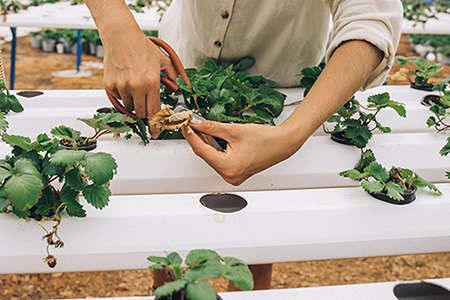
- Pruning Focus: Remove damaged, diseased, overcrowded, or weak-looking foliage to prevent disease spread and redirect energy for healthy growth. Improves light penetration for optimal development.
- Thinning Technique: Selectively remove surplus carrot seedlings to achieve adequate spacing between plants. Allows each carrot to grow and develop its root system without competition for nutrients and water. Supports better airflow, reducing the risk of fungal diseases and promoting overall plant health.
By incorporating pruning and thinning into your hydroponic carrot cultivation routine, you can create an environment that fosters robust growth and maximum yields. Combined with other best practices in hydroponics, such as maintaining proper nutrient balance and providing adequate lighting, these techniques can help you achieve carrots that are not only abundant but also of exceptional flavor and quality.
Protecting Hydroponic Carrots from Pests and Diseases
Protecting hydroponic carrots from pests and diseases is crucial to ensure a healthy and thriving crop. By implementing effective pest management strategies, you can safeguard your plants from potential damage, thus maximizing your yields. There are various methods and techniques available that can help you maintain a pest-free hydroponic environment.
| Issue | Symptoms | Treatment | Effects on Plants |
|---|---|---|---|
| Pests | |||
| Carrot flies | – Rust flies around carrot plants. | – Install vertical fences to keep rust flies away. – Spray plants with neem oil. | Rust flies damage carrot roots. |
| Weevils | – Damage to carrot roots. | – Use neem oil or insecticidal soap. | Root damage affects plant health. |
| Wireworms | – Feeding on carrots. | – Attract natural predators (e.g., nematodes). – Treat soil with sodium bicarbonate. | Reduced yield due to root damage. |
| Armyworms | – Hungry intruders. | – Use insecticides. | Impact on overall plant health. |
| Parsley worms | – Presence on carrot plants. | – Spray chemical insecticides. – Use neem oil or stinging nettle liquid. | Affects plant growth and yield. |
| Snails and slugs | – Feeding on carrot plants. | – Implement snail and slug control methods. | Damage to foliage and roots. |
| Loopers & Caterpillars | – Common intruders. | – Research effective control methods. | Impact on plant health and yield. |
| Bugs | – Various types feeding on carrot plants. | – Use insecticidal soap. | Reduced plant vigor and yield. |
| Leafminers | – Larvae infesting leaves. | – Spray pesticides early. | Lowered carrot yields. |
| Leafhoppers | – Presence on carrot plants. | – Use insecticidal soap. | Affects overall plant health. |
| Nematodes | – Common garden pests. | – Apply triazicide pesticides. | Damage to roots and nutrient uptake. |
| Diseases | |||
| Rust | – Rust spots on leaves. | – Seek advice on rust control. | Reduced photosynthesis and plant vigor. |
| Mold | – Destructive growth on plants. | – Learn how to prevent and treat mold. | Loss of yield and plant health. |
| Black rot | – Decay of carrot plants. | – Use fungicides and pesticides. | Root and foliage damage. |
| Blight | – Adverse growth effects. | – Research bacterial blight control. | Impaired plant development. |
| Leaf spot | – Spots on carrot leaves. | – Explore leaf spot management. | Reduced leaf function and yield. |
| Cavity spot | – Occurs on carrots. | – Investigate cavity spot control. | Impact on root quality and yield. |
You can also use biological control agents such as nematodes or beneficial fungi, which target specific pests or diseases, providing targeted protection without harming the crops. Implementing such measures not only reduces the dependence on chemical pesticides but also supports a more sustainable and eco-friendly approach to hydroponic carrot cultivation.
Recognizing and Addressing Common Nutrient Deficiencies in Carrots
Nutrient deficiencies can significantly impact the growth and development of hydroponic carrots, ultimately affecting their yield and quality. As a gardener, it is crucial to recognize and address these deficiencies promptly to ensure optimal plant health and productivity.
- Nitrogen Deficiency: Lack of nitrogen leads to pale or yellowing leaves, stunted growth and overall plant weakness. Address by providing nitrate-based fertilizers. Regular monitoring of nutrient levels and adjusting nitrogen concentration in the hydroponic solution prevents and corrects deficiency.
- Potassium Deficiency: Insufficient potassium affects root development and disease resistance in carrots. Symptoms include weak stems, brown or yellow leaf edges, and reduced water absorption. Rectify by adding potassium-rich fertilizers to the nutrient solution, promoting healthy carrot growth.
By being vigilant in recognizing these common nutrient deficiencies and taking the necessary steps to address them, hydroponic carrot cultivators can ensure a thriving and bountiful harvest. Providing the necessary nutrients in their proper proportions will help maximize the plants’ potential, resulting in vibrant and flavorful carrots.
Harvesting Hydroponic Carrots at the Peak of Flavor and Crunchiness
Harvesting hydroponic carrots at the peak of flavor and crunchiness requires careful observation and timing. As carrot roots reach maturity, their taste and texture become optimized, making it essential to harvest them at the right moment. The first indication of readiness is the carrot’s color, which should be vibrant and intense, indicating a high concentration of beta-carotene.

Remember, harvesting hydroponic carrots at the optimal time ensures the best flavor and texture. And by following proper techniques, you can enjoy the rewards of your hydroponic gardening efforts with crisp and delicious carrots that will elevate your culinary creations.
Storing and Preserving Hydroponic Carrots for Longevity
When it comes to storing and preserving hydroponic carrots for longevity, there are a few key factors to consider.
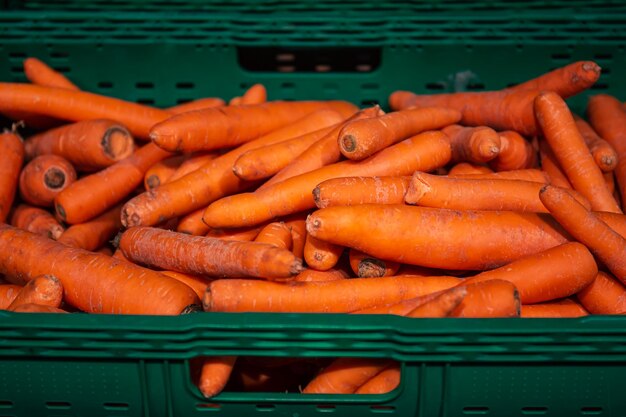
- Harvest Timing:
- Wait until carrots reach their optimum size (around 1 to 1.5 inches in diameter) and flavor.
- Gently pull one carrot out of the growing medium to assess its readiness.
- Handling After Harvest:
- Remove excess soil or debris from the carrots.
- Avoid washing the carrots to prevent moisture buildup.
- Trim carrot tops to about an inch above the root to prevent wilting.
- Storage:
- Use perforated plastic bags for ventilation.
- Store in the refrigerator’s crisper drawer.
- Maintain the ideal temperature and humidity.
By following these steps, you’ll ensure that your hydroponic carrots remain fresh and delicious for an extended period. Happy harvesting! 🌱🥕 .
Troubleshooting Common Issues in Hydroponic systems
Hydroponic systems offer numerous benefits for cultivating a wide variety of crops, including carrots. However, like any farming method, hydroponics can encounter common issues that may hinder the growth and development of hydroponic carrots. Identifying and troubleshooting these issues promptly is crucial for maintaining a healthy and productive crop.
nutrient imbalance
One common issue that may arise in hydroponic systems is nutrient imbalance. This occurs when the ratio of essential nutrients, such as nitrogen, phosphorus, and potassium, is not properly balanced. An imbalance can lead to stunted growth, nutrient deficiencies, or nutrient toxicity in the carrot plants. Regularly monitoring nutrient levels through water and leaf analysis, and adjusting the nutrient solution accordingly, can help prevent and address this issue. Additionally, transparently documenting the nutrient supply and regularly testing the pH level of the nutrient solution can facilitate quick adjustments to prevent nutrient imbalances.
poor root health
Another issue that may arise when growing hydroponic carrots is poor root health. Inadequate aeration or oxygenation of the root zone can lead to root rot or fungal infections. This can be caused by factors such as insufficient oxygen in the nutrient solution, excessive moisture in the growing medium, or the presence of pathogens in the system. Maintaining proper aeration in the root zone by ensuring adequate oxygen levels in the nutrient solution and using a well-draining growing medium can help prevent root health issues.
Regularly inspecting the roots for signs of discoloration or decay and promptly addressing any issues can help maintain healthy roots and maximize carrot growth.
Watch video for more information:
FAQ
Why are hydroponic carrots beneficial?
Hydroponic carrots offer several benefits, such as faster growth, higher yields, and the ability to control nutrient levels more precisely.
How do I choose the right hydroponic system for carrot cultivation?
Consider factors such as space availability, budget, and the specific needs of carrot plants. NFT (Nutrient Film Technique) and DWC (Deep Water Culture) systems are commonly used for growing carrots hydroponically.
Which carrot varieties are ideal for hydroponic cultivation?
Look for carrot varieties that have been specifically bred for hydroponic growing, as they tend to have better flavor, texture, and yield. Examples include Nantes, Amsterdam, and Danvers.
How do I prepare the hydroponic growing medium for carrots?
Use a well-draining medium such as coco coir or perlite, and ensure it is properly sanitized before use to prevent the growth of harmful microorganisms.
What is the process for germinating carrot seeds in a hydroponic setup?
Place the carrot seeds in a moist paper towel or germination tray until they sprout. Then, carefully transplant the seedlings into the hydroponic system.
How can I provide adequate lighting for healthy carrot growth in a hydroponic system?
Use high-quality LED grow lights placed at the appropriate distance from the plants. Aim for around 14-16 hours of light per day during the vegetative stage.
How do I balance nutrient solutions for optimal carrot development?
Use high-quality LED grow lights placed at the appropriate distance from the plants. Aim for around 14-16 hours of light per day during the vegetative stage.
What is the importance of monitoring and maintaining proper pH levels in hydroponic carrot systems?
Carrots prefer a slightly acidic pH range of around 5.5-6.5. Monitoring and adjusting the pH regularly ensures optimal nutrient uptake and overall plant health.
What are the proper watering techniques for healthy carrot roots in a hydroponic system?
Avoid overwatering and provide consistent moisture by using a drip irrigation system or a timer for periodic watering. Aim for a moist but not waterlogged growing medium.
How can I manage temperature and humidity for optimum carrot growth in a hydroponic system?
Maintain a temperature range of 60-70°F (15-21°C) during the day and slightly cooler temperatures at night. Aim for a relative humidity level of around 50-70%.
Why is pruning and thinning carrot plants important in a hydroponic setup?
Pruning helps redirect energy towards root growth and encourages larger yields. Thinning ensures proper spacing between the plants, preventing overcrowding and competition for resources.
How can I protect my hydroponic carrots from pests and diseases?
Implement preventive measures such as using insect netting, practicing good hygiene, and regularly inspecting plants for signs of pests or diseases. Organic insecticides or fungicides can be used if necessary.
What are some common nutrient deficiencies in hydroponic carrots and how can they be addressed?
Common deficiencies include nitrogen, phosphorus, and potassium. Adjust the nutrient solution accordingly and consider adding specific micronutrients if deficiency symptoms persist.
When is the best time to harvest hydroponic carrots for optimal flavor and crunchiness?
Harvest carrots when they reach maturity, usually between 60-80 days after planting. Taste-test a few to ensure they have developed the desired flavor and texture.
How can I store and preserve hydroponic carrots for longevity?
Remove the greens and store the carrots in a cool, dark, and humid environment, such as a refrigerator. Place them in a perforated plastic bag or container to maintain moisture levels.
What are some common issues that can occur in hydroponic systems and how can they be troubleshooted?
Common issues can include pH imbalance, nutrient deficiencies or excesses, root rot, and pest infestations. Troubleshoot these issues by regularly monitoring and adjusting pH and nutrient levels, maintaining proper hygiene, and implementing pest control measures.

Studied Agricultural Engineering-Plant Protection at University of California, Davis.
Head of Content writing team at Southelmontehydroponics.com

